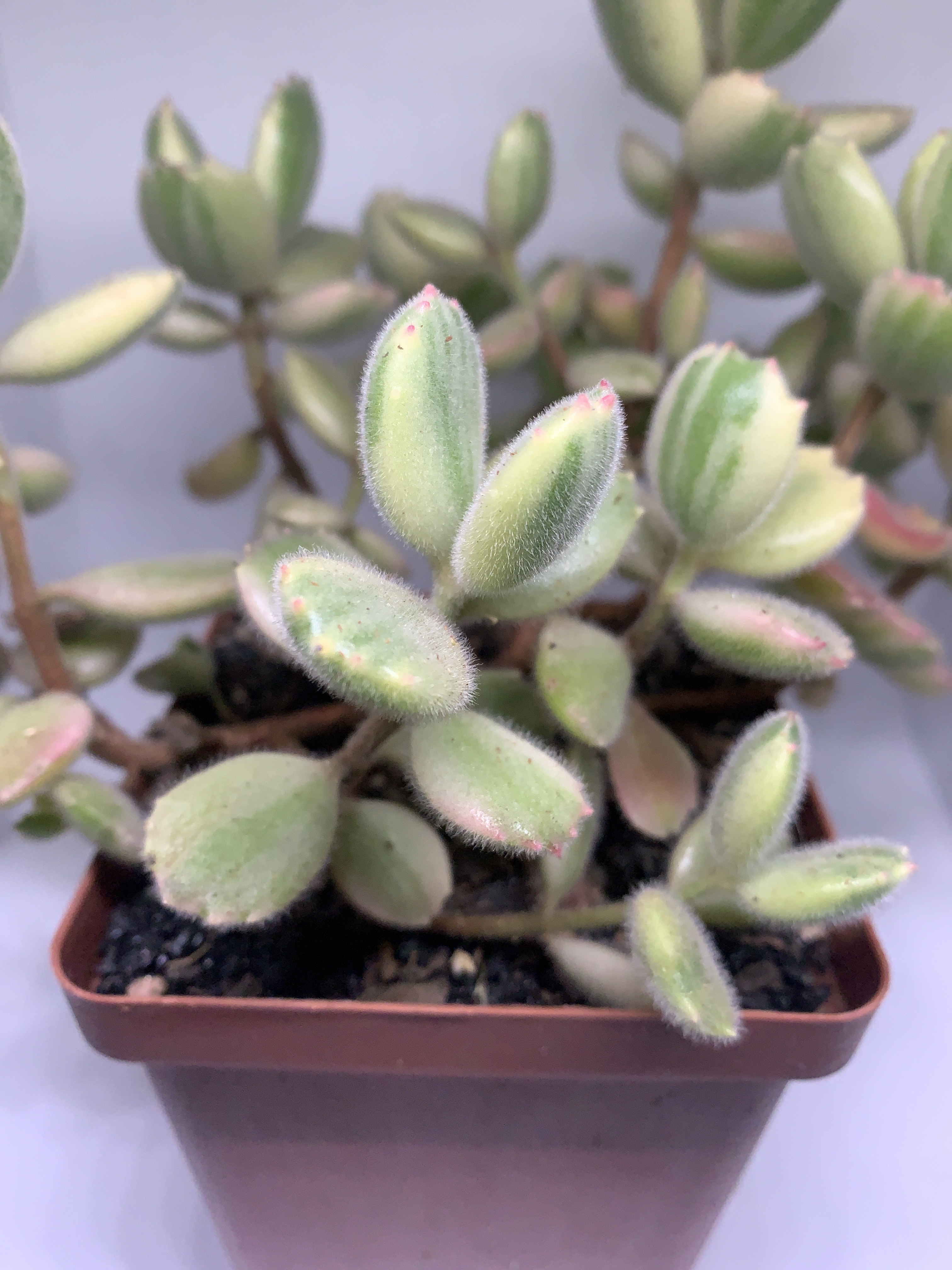
Cotyledon tomentosa ‘Variegated’
R35.00
Out of stock
Family: Crassulaceae
Cotyledon tomentosa ‘Variegated’ is a striking cultivar of the Bear’s Paw succulent, valued for its attractive variegated foliage. It shares the same general characteristics as the species but features irregular patches or streaks of creamy white or pale yellow alongside the typical green leaves, adding extra visual interest.
Origin and Habitat
The species Cotyledon tomentosa is native to the Eastern Cape of South Africa, thriving on rocky, well-drained slopes in semi-arid climates. The variegated form is a cultivated variety selected for its unique leaf coloration and is less common in the wild.
Plant Description
This succulent forms a low-growing shrub with thick, fleshy leaves covered in soft white hairs (tomentum). The leaves are ovate to oblong and feature the characteristic claw-like teeth along the edges. The variegated variety displays patches or streaks of cream, white, or pale yellow variegation mixed with green, giving it a mottled appearance.
In late winter to early spring, the plant produces clusters of tubular orange to red flowers on tall stalks.
Care Instructions
Light
Requires bright, indirect light or partial sun. Variegated leaves are more sensitive to intense direct sunlight and may scorch if exposed to harsh afternoon sun, so some shade during peak hours is beneficial.
Watering
Water deeply but only when the soil is dry. During the growing season, water approximately every 1–2 weeks, reducing frequency in winter when the plant is dormant.
Soil
Needs well-draining soil, such as:
2 parts succulent or cactus mix
1 part coarse sand or perlite
1 part pumice or grit
Good drainage is essential to prevent root rot.
Temperature
Thrives between 18°C and 27°C. It can tolerate brief periods down to 5°C if kept dry. Protect from frost.
Additional Information
The variegated form tends to grow more slowly than the solid green species due to lower chlorophyll levels. It propagates well by stem or leaf cuttings.
Pests like mealybugs can occasionally occur but are generally manageable. The plant benefits from good airflow and avoiding overwatering.
Plants
Explore our rare cycads, clivias, and succulents.
Shop
Garden
© 2025. All rights reserved.
(WhatsApp)
